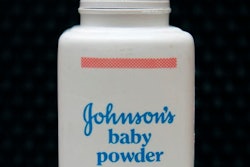
The annual OSHA Top 10 violations list publishes the most frequent citations given out in the past year, and it seems that very little changes with each release. Unfortunately, because it so often highlights similar issues year-over-year, industry stakeholders run the risk of not paying attention – which is a tremendous gamble.
So, what are you supposed to do with this information? With a top-notch team of safety experts in place, Grainger has assembled their own top 10 list – this time, one that helps safety professionals use the OSHA list as a springboard for forming actionable goals for facility safety and compliance programs.
1. Using the Top 10 List to Improve Your Organization
Evaluating the OSHA Top 10 and how it speaks to you and your facility is no easy task. According to Travis Kruse, knowing how OSHA formulates the list is a good first step towards understanding it. “There is only one compliance officer for every 59,000 workers in the United States,” explains Kruse. “If you look at the number of inspections and the number of regulators OSHA has, OSHA is only finding a small subset of the hazards and regulatory violations troubling organizations today.” This sobering figure suggests that OSHA is also perhaps missing a lot of hazards and violations.
Making that information clear for organizations, so they know where to look for missed violations in their own facilities, is a major part of the OSHA Top 10. Too many organizations feel they have addressed many of the regulatory compliance aspects associated with their health and safety programs and feel they are in compliance today. These attitudes could be creating a false sense of security as regulatory requirements continue to change.
Kruse recommends that organizations conduct health and safety program assessments, staying abreast of regulatory changes, mandatory employee training, keeping workers informed, and having the right partners — all of which can help improve the effectiveness of your organization’s safety and health programs and management systems. But ultimately it falls on you to figure out if you need help. “You have to know the confidence level you have in your program,” says Kruse. “Ultimately, a third-party assessment may help you close the gaps and bring your program into compliance more quickly and efficiently.”
2. Going Beyond Compliance and Seeing True Risk
According to Mike Carroll, many companies believe they have a handle on compliance – but most are wrong.
“The compliance portion is a starting point to managing a total safety and health program,” says Carroll. “You can be 100 percent in compliance with local and federal rules and still have a problem with your recordables. The other part of managing a successful safety program is the tougher part: the culture.”
So how do you begin to see your facility’s true risks? “One of the options is to do a thorough site assessment.” A site assessment will break down the hazards you may not see that can contribute to your incident rate. Carroll also recommends looking at compliance programs like OSHA’s Voluntary Protection Program (VPP). “It can provide you with a safety program recognition from OSHA, improving the safety culture of your work environment by partnering with OSHA and your employees and consequently removing you from OSHA’s target list for programmed inspections. And it’ll help you fine-tune a comprehensive safety and health management system.”
3. Safety is Smart Business
For some organizations, safety has become a matter of routine. Numerous companies are OSHA-compliant on the surface, but Hollie Guidi feels that building a strong safety culture begins with a true commitment from management, and a hands-on approach that includes the involvement of employees.
“The organizations that introduce a tough, caring safety program and involve their employees in the development and reinforcement of that program generally have a better safety record,” Guidi says. “This involvement results in other positive impacts throughout the organization and the community at large.”
Engaging employees improves morale and trust, which improves productivity, and that “leads to helping keep costs down.” Safety is everyone’s job and the people most likely to spot problems are those closest to the work. The surrounding community also begins to view the organization as one “that cares for, and takes care of their employees; a good corporate citizen.”
4. If the OSHA Top 10 is So Predictable, Why Does It Keep Happening?
If every facility knows what they need to do to stay compliant, why are we seeing the same issues every time the list comes out? Eric Haugg has an idea as to why.
“Every year big and small organizations have the same issues,” Haugg says. “It’s consistent. And it’s because they’re mostly technical.” Eric believes a combination of insecurity and lack of knowledge is what is keeping the OSHA Top 10 the same every year. “Take fall protection,” he says. “A lot of people buy the product but don’t have the training.” And that’s where the problems begin. “OSHA comes in, sees everybody with harnesses, and they may request to see a written safety program; and a lot of organizations don’t have one in place.” Developing a program and knowing the resources to utilize is key. “Equipment only gets you partway there.”
5. Worth the Investment
It’s not always easy to make the decision to invest in compliance training programs. But the cost of not doing so can be extremely high. With fines going up considerably this year, not improving your safety knowledge can have an adverse effect on your factory line and your bottom line. Joe Burke has seen the effects first hand.
According to Burke, taking the steps to make sure your facility meets with federal and state-controlled OSHA rules and regulations may mean spending more to get the proper training in place. But with the alternative being hefty fines and sanctions, the long-term benefits are definitely worth it.
6. Hot Topics: Lockout/Tagout, Hazcom and Machine Guarding
People say that the OSHA Top 10 never changes, but if you look closely, you can see that certain areas do stand out from time to time. According to John Foston, some deserve more attention.
“Identifying the Top 10 violation isn’t difficult. It’s easy to walk into a facility and see a piece of equipment that’s in the ‘off’ position, and there’s no lock or tag on it,” says Foston. But that’s just the beginning. Organizations are not staying up-to-date with changes to the regulations, and OSHA knows this. “They walk into a facility and see Windex in a plastic bottle with no label, and that could potentially lead to them investigating your program,” he says.
Every facility basically has this “low-hanging fruit” for OSHA inspectors, and Foster believes that addressing it comes down to education. “Make certain that you’re in compliance – whether that's bringing in a supplier to talk about a hazard communication program or understanding where you have gaps and how to bridge those gaps.”
7. Compliance: It’s Not a One-Size-Fits-All Situation
Every organization is set up differently. In small organizations, safety may be handled by the head of Human Resources. In larger ones, there may be several employees in charge of safety programs. So how do you maximize success? According to Michelle Star, you fit the safety plan to the company structure.
“A lot of people feel very overwhelmed by this,” says Star. “Especially if they don’t have a safety person and it’s going through Risk Management or Human Resources.”
For those smaller facilities, third party resources can be crucial. “They look to you to guide them through their safety program, go through their SDS sheets, tell them what kind of products they need and help them with training employees. When you're dealing with HR and supervisors, they don't have the time or the knowledge [to create a safety program]”. She also sees the flip side of a large facility. “They’ll have an actual safety person that has a lot more knowledge of OSHA, PPE, etc.,” says Star. “But compliance is the minimum. There are still different ways to injure yourself. Just because you’re in compliance doesn’t mean you’re at the finish line.”
8. The Lists Behind the List
If you start to slice and dice the data contained within the OSHA Top 10, you will begin to see the actions and areas that lead to the worst accidents and the highest fines. According to Richard Martin, fall protection is a good example. “The top violation on the OSHA Top 10 list of most cited standards is fall protection, but within that you've got fall prevention, fall restraint… it goes on and on.” And if you break down that area into more sub-categories, you can begin to see how complicated it can be. “The most common injury type is actually slips and trips. We get a lot of broken bones and a lot of time out of the plant due to people just slipping on something wet or tipping over an uneven walking surface. Sometimes those injuries end up getting categorized into some other list, such as a sprain or something else.”
And while priorities can vary from organization to organization, it takes time and expertise to figure out which list is important to your facility. Martin continues, “The number of citations may not be impactful for a particular organization. What may be the most impactful may be the number of fatalities and serious injuries, or... number of dollars in fines. Depending on where they are in their safety program and what's important to them, the list being re-sorted might be more impactful.”
9. It’s All About Behavior
One of the main factors keeping the OSHA Top 10 the same is behavior. People are doing the same things — climbing on scaffolding, working with certain chemicals and machinery. Tim Reinke thinks it’s time we start thinking about behavior, trying to change it and being prepared when we can’t.
Reinke has visited hundreds of customers over the years and has seen it firsthand. “Sometimes you'll walk through a facility, and everyone is scrambling trying to find their glasses and their gloves and their respirators.” He believes that type of mentality comes from the top of the organization. “The high-ranking people in the building, when they walk out the door and don't have safety glasses or a hard hat on, it affects the perception of the employees.”
How do you change the “behavioral safety” of your facility? Tim points to oil and gas refineries as the model. “Large O&G refineries make it really simple: You wear your specific PPE, follow procedures, policies and programs, training, stay in compliance or you don’t work there, period. That starts at the top of the organization and trickles down.” Taking the action is the key, according to Reinke. “Make sure all managers and supervisors wear PPE to set the example,” he continues. “Remember, it’s a partnership and we are all on the same team to keep employees safe.”
10. Safety Starts with a Plan
With all the complex issues that the OSHA Top 10 highlights, where do you start? According to Frank Grasso the answer is simple: have a plan.
“I think the worst thing you can do is nothing,” says Grasso. "Don't put it off because it seems complicated, because you're not going to get anywhere with that kind of a plan," According to Grasso, too many companies sacrifice safety for budgetary reasons, and it’s not necessary. “It's not really expensive to have the right eye protection, hearing protection.”
Grasso recommends looking at what you can do right now, with the budget you have available, to get moving forward. “Talking with a safety specialist can open doors you thought might be closed to you. They may be able to show more cost-effective ways to maintain your existing safety program and free-up money for other compliance projects.”
This article has been edited from its original form. Click here for the full version.























